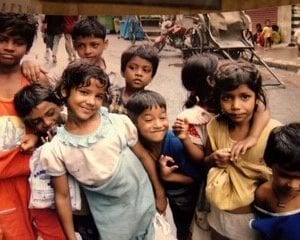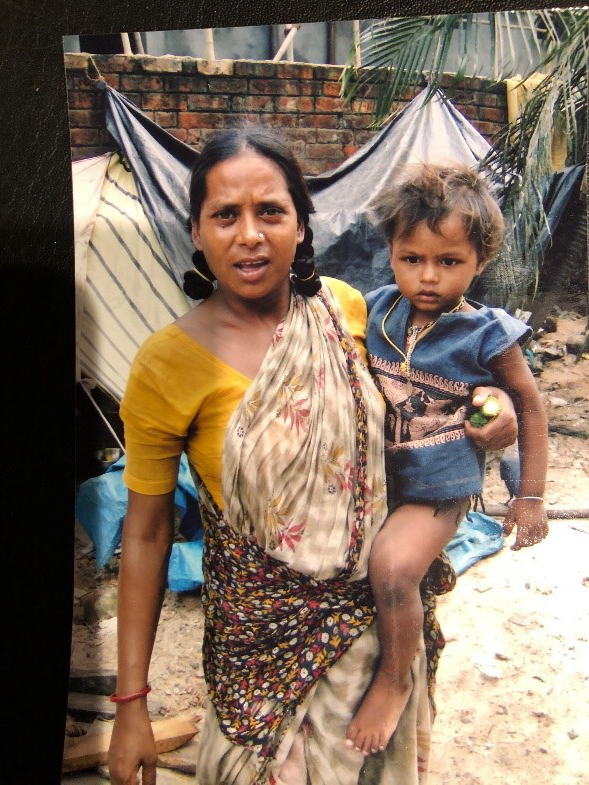Human Rights for Women in India
This essay was written for the Global Dominican Month for Peace by Vicki Schmidt, an associate of the Dominican Sisters of Springfield and executive director of Theresians International. The photographs are also hers.
Meeting India's Women
My first visit to India in 1981 was a three-month intensive experience among the poorest of the poor. Spending time with the Missionaries of Charity in their expansive outreach to the most vulnerable was an eye opener for me at age 24. I was in the Utter Pradesh area north of New Delhi, not far from the Taj Mahal. I was drawn by the spirit of Mother Teresa of Calcutta and wanted to experience her work first hand. So deeply touched by the people of India, I would return three more times between 1981 and 2008. There is a dogged resourcefulness about the people of India, about women in particular.
The plight of women in India is readily seen in any city, village, or rural area. Arriving late at night in Calcutta, I traveled to my hotel to find the outer gate closed and the side walk littered with three familie s sleeping on the concrete with nothing to cover them. One mother right at the entrance to the gate lay there with one naked infant and a nearly naked toddler fast asleep. It is at once a startling scene yet so common in a city like Calcutta. They slept in this strategic spot in hopes of someone offering them food in the morning. As I left very early the next morning for Mass, they were still peacefully asleep at 6 a.m. This subsistence lifestyle is fraught with so many risks for them.
s sleeping on the concrete with nothing to cover them. One mother right at the entrance to the gate lay there with one naked infant and a nearly naked toddler fast asleep. It is at once a startling scene yet so common in a city like Calcutta. They slept in this strategic spot in hopes of someone offering them food in the morning. As I left very early the next morning for Mass, they were still peacefully asleep at 6 a.m. This subsistence lifestyle is fraught with so many risks for them.
Women in Homes for the Dying
After Mass that morning I made my way to the Nirmal Hriday, or Place of Pure Heart, the home for the dying. Seeing six very ill men and women waiting on the steps leading into the hospice was an indication that there were no more beds available. Once inside, there where were an equal number of men and women being cared for. As I walked into the women’s area, a woman was literally being held up in a sitting position because she was so weak. The volunteers were holding her so lovingly; they were steadying her as two nurse’s debrided her toes on both feet which had been chewed on by rats as she lay dying along a busy roadside. There simply are not words at a shocking moment like this. These women have access to no assistance, no support whatsoever, except for what religious ministries offer to the poorest of the poor.
Despite the economy of India growing substantially over the last twenty years, these underlying societal issues continue to keep Indian women from actualizing their true gifts in education, employment, their own entrepreneurial efforts, and leadership in their government. Interestingly, when women in India are offered support through micro-loans to start new businesses, they have the highest rate of return on the micro-loans that got them started. They are able to continue borrowing to expand their businesses because they are a good risk!
Abuse of Women Religious
And sadly, even some religious women are facing violence and sexual assault from priests and  bishops. One religious sister in Kerala was repeatedly raped by a bishop who frequented her community. After enduring it for two years, Sister Lucy went to her superior and she was simply told not to speak of it again and eventually was asked to leave her community. This sister was provided no support from her community throughout this very difficult time. They were conditioned not to question the male leaders of the Church even about the rape of one of their own sisters. Finally, after much turmoil, the bishop is facing a trial for his many assaults against her.
bishops. One religious sister in Kerala was repeatedly raped by a bishop who frequented her community. After enduring it for two years, Sister Lucy went to her superior and she was simply told not to speak of it again and eventually was asked to leave her community. This sister was provided no support from her community throughout this very difficult time. They were conditioned not to question the male leaders of the Church even about the rape of one of their own sisters. Finally, after much turmoil, the bishop is facing a trial for his many assaults against her.
While some progress is being made, India rates 131 out of 188 countries in the U.N. Development Program's Gender Inequality Index. A lack of women’s education, dowry, female infanticide, child marriage, domestic violence, rape, human trafficking, honor killings, acid throwing, accusations of witchcraft are all persistent issues despite decades of successive governments' efforts to address them. Gender inequality for women in India throughout its history has been simply horrific. Moreover, because of the deep seated and systematic patriarchy in every aspect of Indian life, from family homes to their government, girls are rarely encouraged or promoted within family structures because of the promotion of male children. More and more women are fighting for gender equality in India…even as some risk their lives to do so.
Women's Lives by the Numbers
Violence
In 2016, There were 338,954 reported incidences of crime against women. These included:
- 7,628 dowry deaths
- 225 cases of acid attack
- 110,434 reported cases of cruelty by a husband or his relatives
- 1,183 cases of human trafficking
- 39,068 rape cases
- 39,953 cases of assault on women
- 27,422 sexual harassment
(National Crime Records Bureau)
Education and Inclusion
Literacy
Literacy rate for Indian men = 82.14% for Indian women = 65.46% (2011 census)
Work
Participation rate of women in employment was less than half that of men.
Urban employment 54.6% men—14.7% women
Rural employment 54.3% men—24.8% women
Government
Women's representation In 2014
Lower House of Parliament—11.9%
Upper House of Parliament—11.4%



Nice Post! Thank you for the information you shared. I appreciate it.